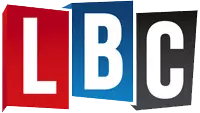Mortgage Calculator for Right to Buy Borrowing
Right to Buy is a popular initiative supporting tenants in social housing schemes to secure their entitlement to purchase their long-term residence. Visit our calculator for immediate access to information about what you can borrow and the associated repayment costs.


Right To Buy Mortgage Calculator
Right to Buy helps council tenants purchase their home at a discounted rate, and a calculator can be a good starting point to get a rough idea about what sort of rates you might be offered, and what your Right to Buy mortgage calculator might cost.
The best way to find the most attractive offers is to work with an experienced, independent broker - contact Revolution Brokers on 0330 304 3040 or email us at.
Right To Buy Calculator
Buying your own home can feel like a huge step. The Right to Buy scheme helps eligible public housing tenants buy their homes at a discount. Our guide can lead you through using our calculator, making it easier for you.
Keep reading to simplify your home-buying journey.
What is Right to Buy?
Right to Buy is a government scheme that allows eligible council tenant and housing association tenants in England to purchase their home at a discounted price. This initiative aims to help tenants step onto the property ladder and own a property they have been renting.
How does it work?
The Right to Buy program allows tenants living in council properties the opportunity to buy their homes at a discounted rate. To start, eligible tenants need to complete an application form sent to their local council.
The council house reviews this form and decides if you can buy your home under the Right to Buy scheme. If approved, they'll inform you about the discount you're entitled to and the price you can purchase your property for. If the consumer price index increases, the maximum discount will increase as well.
After receiving approval, seeking right-to-buy mortgage advice becomes crucial. This involves reaching out to banks or right-to-buy brokers who specialize in these types of mortgage deals.
They will guide you on how much you can borrow based on your financial situation, helping make homeownership a reality through tailored advice and support. If you don't feel this is the right deal for you, you can try a right to acquire scheme and see how you can buy property. Next up, let's delve into what makes one eligible for this program.
Eligibility requirements
Understanding the eligibility requirements for a Right to Buy mortgage is crucial. Here are the key factors that determine if you can take advantage of this opportunity:
- Secure Tenancy Status: You need to be a public sector tenant with a secure tenancy. This usually means you rent your home from the local council houses, housing association home, or another public sector landlord.
- Length of Tenancy: Applicants must have been public sector tenants for at least three years. These years do not need to be consecutive but should total up to three.
- Property Type: The home you wish to buy must be your only or main home. It should also be self-contained; you must not share essential facilities like bathrooms and kitchens with other people outside your household.
- Financial Standing: Having a stable income or the ability to secure a mortgage is necessary. Your financial history will be reviewed to ensure you can afford the purchase.
- No Outstanding Possession Orders: You cannot apply if there are legal orders against you for eviction from your current home.
- Joint Applications: You may apply jointly with someone who shares your tenancy or up to three family members who have lived with you for at least 12 months prior to applying.
Meeting these criteria puts you in a position to explore how much discount you could get and what your right to buy mortgage deal might look like. Each element plays its part in shaping your application and ultimately determines whether this path is open for you.
How to Use the Right to Buy Calculator
To use the calculator, input your relevant information and understand the results that are generated. Understanding how to interpret the results is key in making informed decisions about your right to buy options.
Inputting necessary information
To calculate your right to buy mortgage, you start by inputting crucial data into the calculator. This includes your current rent amount, the market value of your home, and how many years you have lived there.
Providing accurate information is key to getting reliable calculations.
You also need to add any discounts you're eligible for based on your tenure. Right to buy brokers can guide you through this step if needed. The calculator uses all these inputs to show how much you might save when buying your home compared to staying in a rental situation.
Understanding the results
The calculator yields your potential discount and savings based on the inputted property details and financial information. The results provide a clear breakdown of the maximum discount available for purchasing your council home, helping you understand how much you could potentially save through the scheme.
It also outlines your estimated mortgage amount, empowering you to make informed decisions about embarking on the Right to Buy process.
After inputting all required details, the calculator generates an instant summary of your potential discounts and savings as well as an estimate of how much you can borrow through a Right to Buy mortgage.
Discounts and Savings
Get ready to explore the different levels of discounts available for houses and flats under the Right to Buy scheme. Discover the factors that can affect the discount amount when purchasing your property through this program.
Different levels for houses and flats
Houses and flats are eligible for different discount levels under the Right to Buy scheme. Houses generally receive higher discounts compared to flats due to their value and location.
The length of time you have been a tenant also affects the level of discount you could be entitled to on both houses and flats, so it's essential to consider these factors when using the Calculator.
The type of property you are looking to purchase is an important factor in determining the discount level. Understanding this distinction can enable tenants to gain a clearer picture of potential savings available through the Right to Buy scheme.
Factors affecting discount
Factors affecting the discount on Right to Buy properties include:
- Property type - The level of discount varies for houses and flats.
- Length of occupancy - The longer you've lived in the property, the higher the discount.
- Location - Discounts may be influenced by the area where the property is located.
- Market value - The market value of the property at the time of purchase impacts the discount.
- Previous public funding - If public funds were used to buy or improve the property, it could affect the discount.
Repairs and maintenance - Factors like recent refurbishments or maintenance work can also influence the discount amount.
Can I Get a Right to Buy Mortgage Throughout the UK?
There are different schemes in place in Wales and Northern Ireland.
In Scotland, there is no similar scheme. While you can apply to purchase a council property if they agree it will likely be at full market value.
In Wales, there is a similar scheme but with a maximum discount of £8,000. You need to have been a council tenant for at least five years, although that doesn't have to be within the same property.
Northern Ireland offers a similar scheme with a maximum £24,000 discount, again with a five-year council tenancy requirement. These discounts are not provided on ground floor properties of one or two bedrooms, or sheltered accommodation.
How Much Discount Can I Get on Right to Buy?
The upper limit is capped at £108,000 in London and £80,900 throughout the rest of England - the discount is higher in the capital, given the higher property prices.
Your discount depends on whether you are buying a house or a flat, how long you have lived there, and what the property is worth.
The below table shows the discount available on a house valued at £100,000 - you get a 35% discount if you have been a tenant for between three and five years, plus 1% more for every additional year of residency:
|
Length of Tenancy |
Discount Available |
Value of Discount |
|
Three to five years |
35% |
£35,000 |
|
Six years |
36% |
£36,000 |
|
Seven years |
37% |
£37,000 |
|
Eight years |
38% |
£38,000 |
|
Nine years |
39% |
£39,000 |
|
Ten years |
40% |
£40,000 |
Discounts on flats are different, and start at 50% with an additional 2% discount for each extra year:
|
Length of Tenancy |
Discount Available |
Value of Discount |
|
Three to five years |
50% |
£50,000 |
|
Six years |
52% |
£52,000 |
|
Seven years |
54% |
£54,000 |
|
Eight years |
56% |
£56,000 |
|
Nine years |
58% |
£58,000 |
|
Ten years |
60% |
£60,000 |
How Much Does it Cost to Pay Back a Right to Buy Mortgage?
If you're eligible for Right to Buy, you need to make sure you can afford the monthly mortgage repayments, as well as the general costs to run your home. Expenses include:
- Utilities.
- Council tax.
- Maintenance costs.
- Insurances (buildings, contents, life, mortgage payment protection).
- Service charges on a leasehold property.
Mortgage calculators can be useful to work out the total cost to run and buy your home.
What Deposit is Required for a Right to Buy Mortgage?
Many Right to Buy applicants do not have a deposit - making this scheme highly attractive to applicants who would otherwise not be able to get onto the property ladder.
If you apply to the right lender, they will consider the Right to Buy discount in lieu of a deposit, so you can borrow up to 100% of the purchase value, without needing a cash deposit.
Potentially, depending on your financial circumstances and value of the home, you might be able to borrow more, and raise funds to cover property improvement costs.
Some lenders do require a deposit, and will usually ask for 5% to 10%, although this very much depends on the policies of the lender and how closely you meet their requirements.
You cannot rent out a Right to Buy property within the first five years - however, you can rent it out after five years. Usually, you'll need approval from the landlord, and sometimes to pay a subletting charge.
In most cases, you will need consent from your mortgage lender, or to refinance on a Buy to Let mortgage.
BTL lending is usually capped at a 75% LTV, requiring a 25% deposit - although you can find lenders with much lower deposit requirements by working with an independent broker.
How Do I Calculate Affordability and How Much Does That Mean I Can Borrow?
Lenders need to work out what they think you can afford, and how risky your application is. They will look at:
- Your age.
- Credit rating.
- The property type.
- How much you earn.
- The stability of your employment.
Mortgage calculators can be useful in working out an estimate of what you might be able to borrow. However, it's worth remembering that a calculator is only ever indicative, and so it's best to consult a broker who can provide more accurate figures.
Lenders will usually offer up to four times your annual income, although some can offer five or even six times in the right circumstances.
You'll also need to provide details about your employment, how stable it is (i.e. if you have a permanent role, full-time or part-time, fixed-term contract etc.). Some lenders will include bonuses or commission in your annual salary figure, meaning you can potentially borrow a higher value.
Self-employed applicants will need to provide around three years of accounts. Again, there is flexibility available by working with an independent broker, and you can apply for Right to Buy as a self-employed person even if you haven’t been trading for long.
Can I Get a Right to Buy Mortgage with Bad Credit?
You can, although you'll need professional advice to apply to the right lenders. In some cases, you might be offered higher interest rates, or be asked for a deposit, but Revolution can negotiate the terms on your behalf.
We work with Right to Buy applicants who have had any number of credit problems, including:
- Low credit rating, or no credit score.
- Late payments and mortgage arrears.
- Defaults or CCJs.
- Debt management plans.
- IVAs.
- Bankruptcy or repossessions.
The best thing to do is to check your credit score before you apply, and understand what issues are shown, and how long ago they occurred.
Query any errors, and ensure your credit file is up to date before you start the mortgage application process.
What Types of Property Can I Purchase through Right to Buy?
Different properties receive different discounts. Non-standard properties can be trickier to mortgage since they pose a higher risk to the lender - these include:
- Unusual constructions and eco-homes.
- Listed buildings.
- High-rise flats, and flats with balcony access.
- Concrete properties and those with timber frames.
You can purchase these sorts of homes through Right to Buy, but it is vital to work with a broker who can recommend lenders with experience in non-standard property lending.
Can I get a Right to Buy Mortgage if I am Retired?
We often help applicants who have been rejected by their bank due to their age - many lenders set an upper limit, or might not consider pension income streams in their affordability calculations.
You can secure Right to Buy lending if you are retired, or nearing retirement age, by working with lenders who have more flexible later-life lending terms.
Give us a call if this applies to you, and we'll put you in touch with the best lenders.
Professional Advice with Right to Buy Mortgage Calculations
While online calculators are useful, they are only ever indicative, and can't assess things like eligibility criteria.
For help finding the most competitive Right to Buy lending, and working out what you could borrow and how much it will cost, give us a call on 0330 304 3040, or email the mortgage advisors team at [email protected] to arrange a good time to talk.
You can borrow up to £82,800 in England and £110,500 in London under the Right to Buy scheme. The specific amount you can borrow depends on factors such as your income, credit history, and the property's value.
The mortgage broker will consider your financial situation when determining how much you can borrow on a Right to Buy mortgage. It's important to review your finances carefully and seek advice from a qualified mortgage advisor to understand the specifics of your borrowing capacity.
Yes, a deposit is required for Right to Buy. The amount of the deposit will depend on the lender and your financial situation. Typically, most mortgage lenders will require a deposit for Right to Buy mortgage loan, with the exact amount varying based on factors such as credit score, income, and the full market value of the property being purchased.
If you're considering exercising your Right to Buy option, it's important to be aware that a deposit will likely be necessary when applying for a mortgage.
The process duration for the Right to Buy application varies. It could take anywhere from three months to a year, depending on individual circumstances and how quickly relevant documents are gathered and submitted in a completed application form.
It's essential to stay in touch with your local council or housing association throughout the process.
As you embark on the Right to Buy mortgages journey, keep in mind that each step may have its own time frame for completion.
The government offers a significant discount on the purchase value of a council property, depending on the following:
- Where you live (different discounts apply in London).
- How long you have lived there - the minimum is three years.
- If it is your only home; you cannot have an additional residence, or use Right to Buy to purchase a second property.
- Whether there are any severe credit issues or court orders pending.
You can apply jointly with a partner, provided they are on the tenancy agreement and have been living with you for at least a year. There can be up to three family members on each application.
In England, the maximum Right to Buy discount is £80,900, or £108,000 in London.
The longer you have lived in the property, the larger the discount.
There are also rules about existing bankruptcy petitions or creditors agreements. You also cannot apply for Right to Buy if the property is due to be demolished.
Further Reading
-
Right to Acquire Mortgages
-
Mortgage Calculator for Right to Buy Borrowing
-
Frequently Asked Questions - Right to Buy Mortgage Deposits
-
UK Mortgage Lenders Offering the Right to Buy Scheme
-
Applying for a Right to Buy Council House Mortgage
-
The Best Mortgage Deals on Right to Buy
-
Getting a Right to Buy Mortgage with an Adverse Credit History
Explore Our Presence
Securing an excellent mortgage offer with Revolution Finance
Brokers couldn't be easier:
Revolution Mortgage Brokers:
100% Independent & Whole-of-Market
As specialist mortgage brokers for a huge variety of applicants, the whole-of-market consultants at Revolution provide access to an exceptional range of lenders, products and mortgage deals. That means you get the advantage of professional negotiation and broker-exclusives through an established lending network to ensure we always find you the most competitive mortgage available.
Ask the Expert
Mortgage Brokers


























